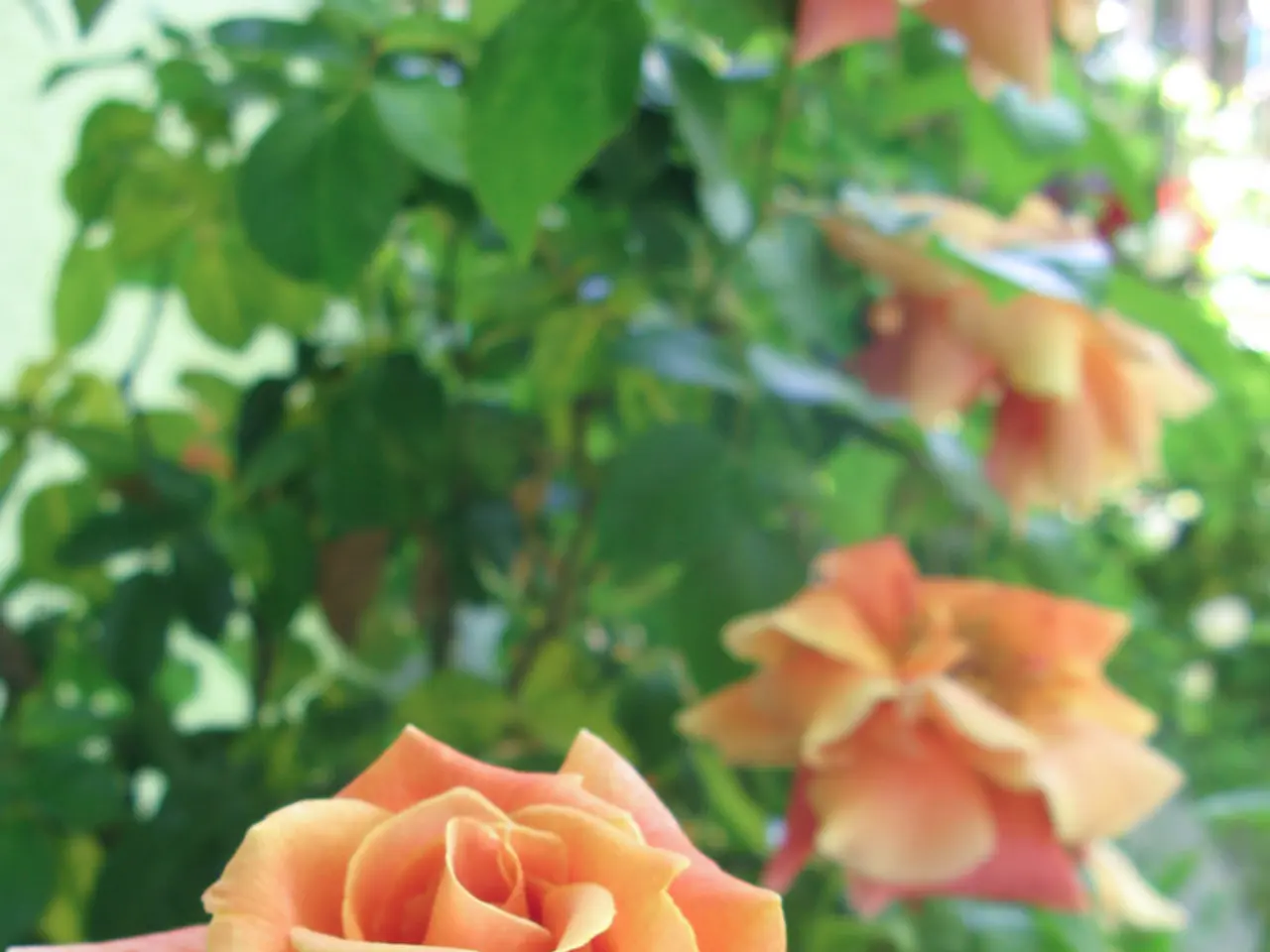Vibrant Desert Rose: A Charming, Rewarding, and Minimal-Effort Flower for Gardens Suited to Warm and Humid Environments
The Desert Rose, scientifically known as Adenium obesum, is a resilient and long-lasting plant native to sub-Saharan Africa and the Arabian Peninsula. This extraordinary specimen has found a place of prominence in the growing floriculture industry, particularly in India, where it can be a showstopper.
This plant is not just a visual delight but also a testament to adaptability. It thrives in full sun, requiring at least 6 hours of sunlight per day. During its growing season, particularly in late winter through early summer when it flowers, it enjoys some moisture. However, it is prone to root rot if planted in excessively moist soil, so careful watering is essential.
The Desert Rose is popular not only as a houseplant or bonsai but also as a useful landscaping plant in tropical regions. It provides ornamental value to gardens, nurseries, and roadside plantations, and can be sold at flower markets and nurseries for economic returns.
Propagation of the Desert Rose can be achieved through three major methods: seeds, stem cuttings, and grafting. Stem cuttings are the most easiest and effective way for most farmers and home gardeners. Grafting is used by expert growers to create strong hybrid varieties of Desert Rose.
Pests like mealybugs, spider mites, and scale insects frequently attack Desert Rose. To control these pests, apply mild, non-oil-based pesticides. Fungal leaf spots will occur during wet seasons but generally will not seriously injure the Desert Rose.
The Desert Rose boasts thick, grey-green stems that branch out into clusters of glossy green leaves and striking trumpet-shaped flowers, ranging from vibrant red and pink to occasional white. Several cultivars are available, including 'Singapore', 'Grumbley's White', and Thai double-bloomed hybrid varieties.
In its natural habitat, the Desert Rose can survive for hundreds of years with minimal water due to its swollen stem, or caudex, serving as a natural reservoir. Mature Desert Rose plants require less but still enjoy an application of slow-release fertilizer to keep them vigorous. Younger plants receive liquid fertilizer every other week in the spring, then slow-release fertilizer during the summer and early autumn.
During winter, the plant must be maintained dry and warm, and can be grown in pots in colder regions so it can be brought indoors or under shade when it gets cold or rainy. Water thoroughly but allow the soil to dry out between waterings.
The Desert Rose belongs to the Apocynaceae family. In Germany, the most popular cultivar of the desert rose is Adenium obesum itself; it can be grown indoors or on balconies where it receives plenty of sunlight, as it is not hardy outdoors in the German climate.
In conclusion, the Desert Rose is a versatile and visually stunning plant that adds a touch of exotic beauty to any environment. With proper care and attention, it can thrive and provide a source of joy for many years to come.
Read also:
- Peptide YY (PYY): Exploring its Role in Appetite Suppression, Intestinal Health, and Cognitive Links
- Toddler Health: Rotavirus Signs, Origins, and Potential Complications
- Digestive issues and heart discomfort: Root causes and associated health conditions
- House Infernos: Deadly Hazards Surpassing the Flames








